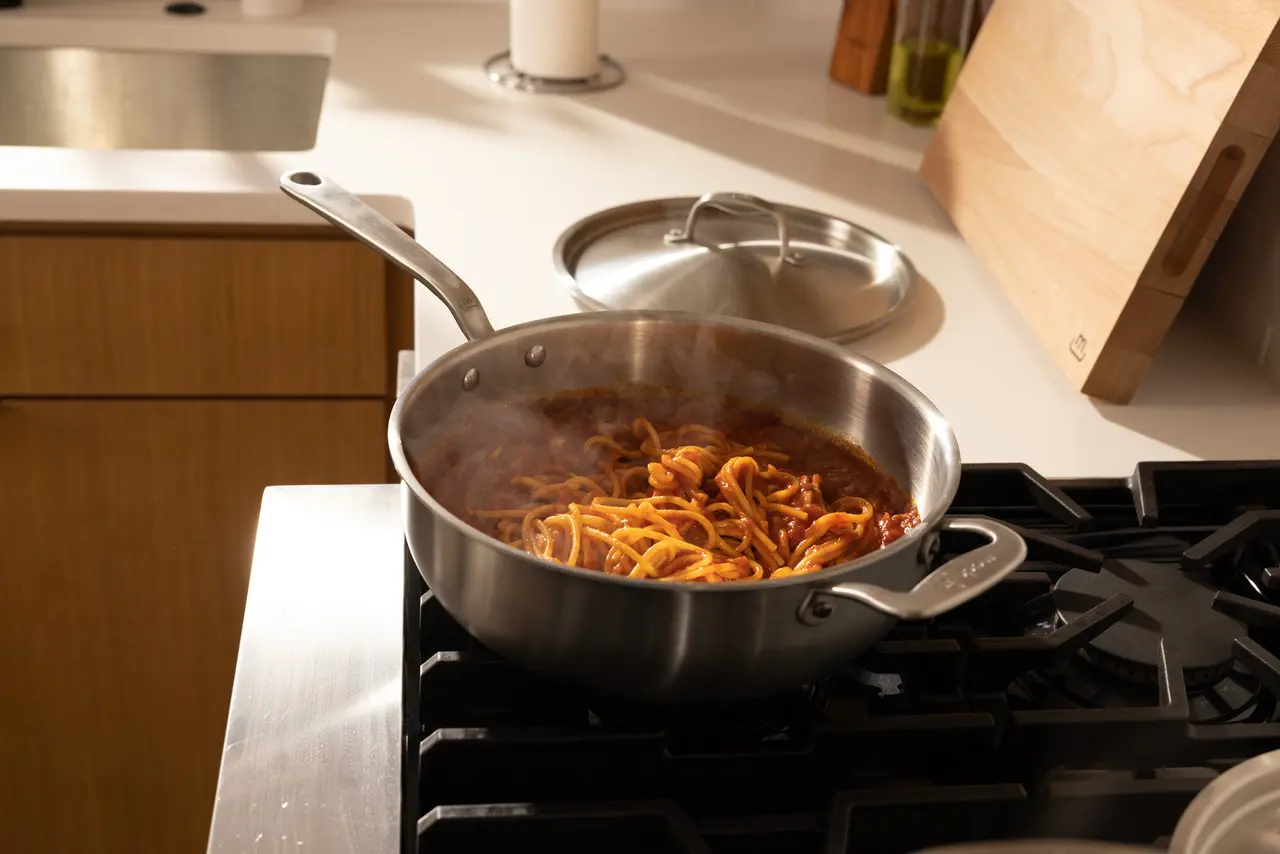“If you’re not finishing your pasta in a Saucier, you should be,” says Executive Chef Alex Tubero of Manhattan’s Amali. While he first boils pasta in a Stock Pot, he says the most essential part to cooking pasta is finishing it in his sauce. And his tool of choice is always a Saucier.
“When one of my chefs said he liked Saute Pans, I was like ‘no you have to try this.’ He’s never gone back,” says Chef Tubero.
If you don’t know how to finish pasta in its sauce, or why a Saucier is great for the job, Chef Tubero shared his reasons why this pot is perfect, and how to get it done.
Higher Walls
“The high walls are great. It stays hotter, it cooks the sauce better, the sauce doesn't evaporate,” explains Chef Tubero. If you finish your pasta in a Saute Pan instead, the low walls may cause more evaporation and the pasta can dry out, he explains.
With a Saucier, you don’t have to worry about this, as the high, curved walls help insulate the pasta, cutting down on evaporation. You can actually cook the pasta in the sauce for longer, without having to add more water and dilute the sauce, and your pasta will still be perfectly cooked. This also yields more flavorful pasta as it absorbs some of the sauce as well as the pasta water while cooking.
No Corners
“Another thing that you don't have to worry about is the sauce burning on the sides. You can get it out of all the corners really easily and it all stays in a bit better,” says Chef Tubero. When you are cooking in a sauté pan or especially a saucepan, it is easy for sauce to get stuck in the corners and burn.
The curved walls of the Saucier leave no easy corners for sauce to sneak into. This design element makes stirring easy and comfortable. The ease of stirring is also why the Saucier is our very favorite pan for risotto.
Extremely Durable
As with all of our Stainless Clad Cookware, the Saucier is built to last. After all, they have to be able to withstand not only the heat but the wear and tear of a professional kitchen. The Saucier is constructed from 5-ply Stainless Steel, which is excellent at conducting heat evenly so everything cooks at the same temperature.
Unlike other Stainless Steel Pans, it is also non-reactive so you don’t need to worry about tomato-based sauces damaging its finish. Plus, its handle stays cool even when the sauce or pasta inside is boiling hot.
Chef Tubero loves how durable it is because it means he can be aggressive with the pasta. “You can throw those things against the wall and they’re fine. They're built to withstand anything. They're functional and they're beautiful,” he says. (Disclaimer: we don’t recommend throwing anything against its walls, but you get the point).
While Chef Tubero loves the Saucier for pasta, he highlights its usefulness for other things at Amali as well. For their weekend brunch, he uses it to make a soft, Gordon Ramsey-style scrambled egg as well as spinach. “We also cook a lot of spinach in them because it’s the only pan you can throw a bunch of stuff in and let it cook down,” says Chef Tubero, citing another use for those high walls.
Maybe you haven’t heard of a Saucier before, or maybe you think it can be replaced by a Saucepan. It can’t. It is an essential for any professional and home cook who loves pasta.























